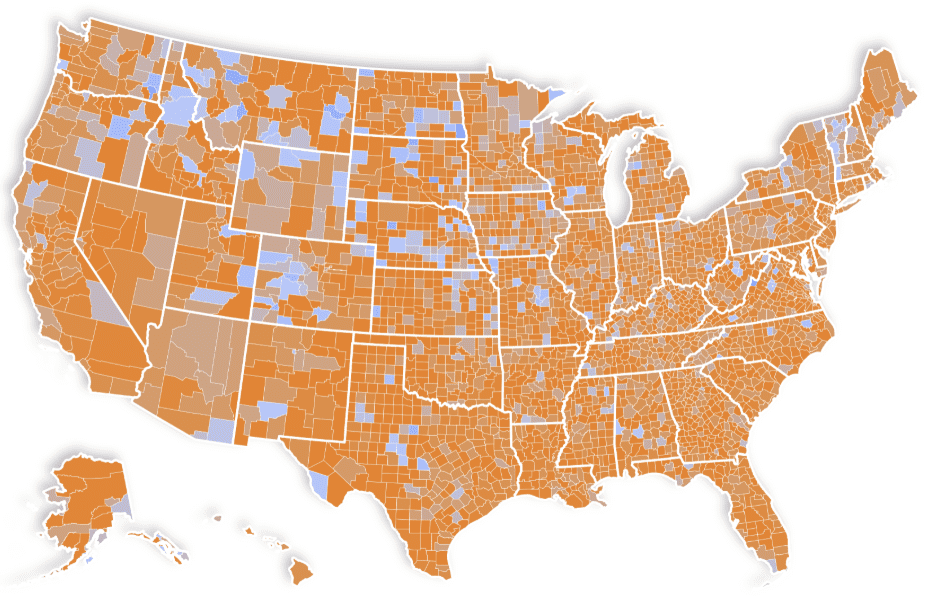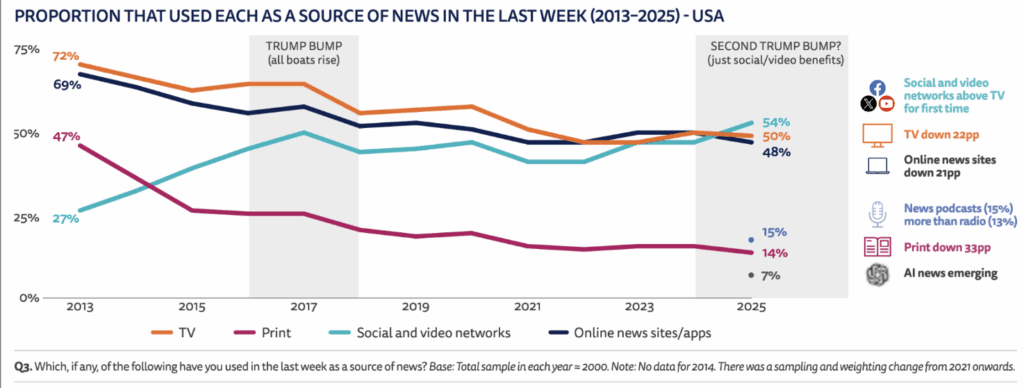Above: A field trip led by Isaias Hernandez for his followers to learn from the Mojave Desert Land Trust. Photo courtesy: Isaias Hernandez
Storytelling is our work as water and climate communicators, and for years, we relied heavily on traditional media. But the landscape has radically changed. Between misinformation, struggling newsrooms, and disenchantment with old-school digital strategies, we need to adapt. While we’re still trying to get op-eds published, the Right is investing millions into creator partnerships.
Trusted messengers have always been the secret sauce to strategic communications: seeding the right message, through the right messenger, at the right time. Rinse and repeat. These days, people are often looking to online influencers as culture and meaning-makers.
To explore this, the Water Hub and Climate Advocacy Lab co-hosted a conversation with climate creator, Isaias Hernandez (@queerbrownvegan), to talk about how to build real, lasting relationships with online influencers as storytellers.
Queer Brown Vegan and the team share tips for the climate and water communicators
We heard great insights and best practices from around the room. Here are some top takeaways:
- Relationships are everything: Don’t just pop into creators’ DMs to ask them for free labor. Invest in relationships to build trust and to embody reciprocity.
- Adjust your time horizons: This work takes time both on the campaign planning cycle side and to grow a network of engaged creators. We’re talking months and years to deepen this work.
- Pay creators, not Big Tech: Funnel some of your digital ad spend to creators instead. You’ll get authentic content that will reach people, and you’re investing in a real person’s media presence to tell stories.
- Give creative freedom: We need to honor creators’ expertise once we resource them with messaging and information. They know how to speak to their audiences, and people don’t like seeing content that looks too scripted.
- Take action offline: Combine digital content with in-person events to build community and to make our issues real. That can look like a field trip, or dare I say even something like a water party (we’re manifesting over here!). People are seeking connection now more than ever, and you can still have content capture opportunities with attendees and creators to share post-event.
I think that's why adults love field trips – it’s that we get to relive our young experiences... We actually did a learning field trip where we brought 60 people from the LA Union Station over an hour and a half on a bus ride to the Mojave Desert where they not just hiked and hung out, they actually did experiential workshops.
Isaias Hernandez, Queer Brown Vegan
Why should the water and climate movement work with influencers? Our media environment has seen seismic shifts in the past two decades, and our digital strategy playbook has dramatically changed. So, we need to diversify our messengers, tones, and content formats to meet people where they’re at, to not leave anyone behind.
Changing digital habits and strategies
Social media is now the number one news source, taking the top spot from TV for the first time as of this year.
A growing number of people (including 37% of those under 30) turn to influencers to make sense of current events, blurring the line between journalists and influencers. According to Pew Research, 30% of Latine, 29% of Asian, and 27% of Black adults report trusting influencers for their news, and 26% of people with lower incomes say the same. This work is an equity issue if we want to reach communities underserved by traditional media.
Research also shows that people in the United States read at a 6th grade level, while most national news outlets write at a 12th grade level, or even higher.
Creators build their following by creating entertaining content that’s relevant to their audience. A wellness creator might interpret the same story very differently from one focused on racial justice, and that’s precisely the point. Working with these specialists can help us tell relatable and personal stories that tie to place and issue.
The recent #TeamWater campaign engaged influencers around the world to educate their audiences about the water access gap and enlist their help to raise more than $41 million in a month. Creators developed animations, video game modules, songs, and more to inspire action. Read more about our takeaways in our recent blog.
Digital strategists also face huge obstacles in our traditional approaches. We have less control over targeting audiences for ads, X is a dumpster fire of racism and mis- and disinfo, and platforms like Meta flag our ads all the time. Advocacy organizations are also seeing less virality with online petitions as our email lists are fatigued and clicktivism is less compelling – especially when asks are sent from our org channels vs. a real person.
Journalism’s challenges and the rise of the Right’s media ecosystem
Working with creators or media is not a zero-sum game. They can even complement each other, with some influencers partnering directly with news outlets, such as Teal Lehto (@westernwatergirl) and High Country News. We wrote about this on our blog earlier this year. We believe we need journalism to be funded, accessible, and trusted as a source of information.
Unfortunately, for decades, newsrooms have been gutted, leaving communities without local news, creating an information vacuum. To put this in perspective, the U.S. has 75% fewer local journalists than it did in 2002.

According to Muck Rack, about a third of U.S. counties, mostly in rural areas, have less than one full-time journalist. Plus, 75% of “rigorous” journalism now lives behind paywalls, leaving people in the lurch and creating the conditions for misinformation to take root and important issues to lack visibility with the public.
The Right has developed an entire media ecosystem that validates their agenda– and it’s often free and plainly communicated, with repeated talking points that reinforce narratives harming our communities and nature. And it often includes creators and influencers. For example, Turning Point USA has a whole program that incubates right-wing creators long-term to seed out their divisive messaging.
We’ve also seen fossil fuel companies like Shell engage travel influencers and even build out immersive experiences in Fortnite to reach young folks
This kind of multi-media saturation can, over time, shift the mental shortcuts (or narratives) we use to make sense of the world around us, either justifying existing systems or motivating us to change them for the better.
Learn more about influencer campaign work from the Water Hub
We’ve worked on a few campaigns over the years to drive awareness, including for the Inflation Reduction Act and the Line 3 oil pipeline fight. Read more about our results and some tips for how to work with creators in this campaign blog recap and in our influencer engagement guide.
What's next?
Get the Water Cooler newsletter sent directly to your inbox by signing up here to hear about future trainings and resources. You can also stay in the loop with Water Hub by following us on LinkedIn, Instagram, and Bluesky.
Join the member community at the Climate Advocacy Lab. We’ll see you there!
